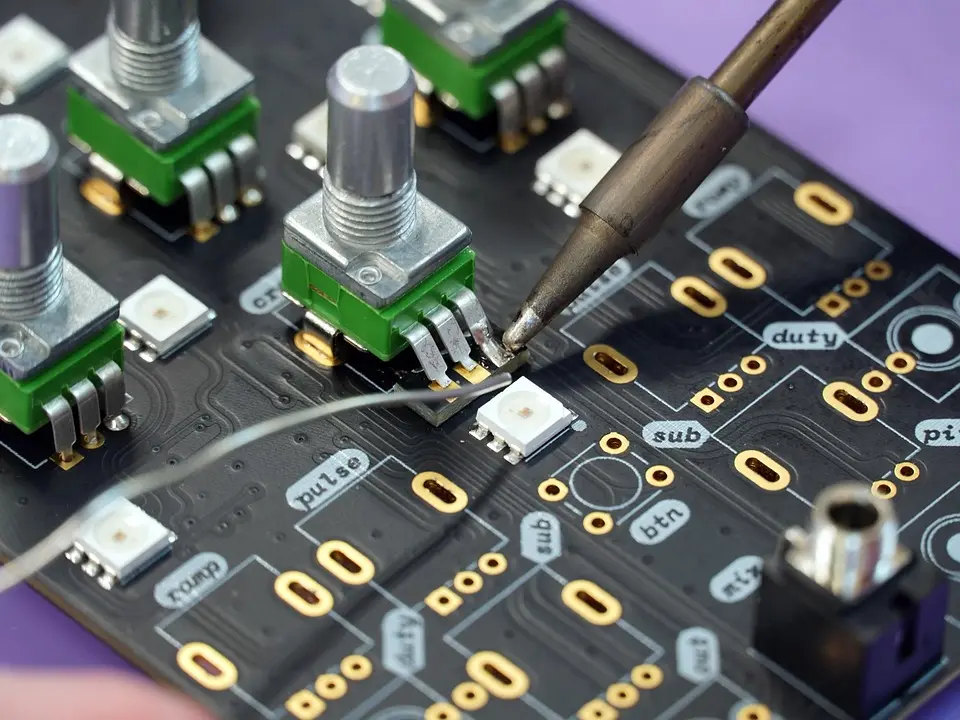
Definitive Guide to Choosing the Ideal Substrate for Your PCB: Materials, Properties, and Applications
1 · Why k, Tg, and εr Matter
Before diving into materials, let’s contextualize the three values that cause the most confusion:
| Parameter | What it Measures | Why it Matters |
|---|---|---|
| k (W/m·K) | How quickly the substrate conducts heat | The higher the k, the easier it is to remove heat from LEDs or MOSFETs and avoid hot spots. |
| Tg (°C) | Temperature at which the resin turns rubbery | Above Tg, the laminate softens and vias may fail; choosing a Tg higher than the operating temperature and solder profile is critical. |
| εr | Material’s ability to store electric field | A stable, low εr reduces distortion in RF traces and rise times in fast digital buses. |
With this in mind, let’s examine each substrate family with more than just numbers.
2 · Rigid Substrates
2.1 FR-4 — the “Generalist”
The fiberglass and epoxy laminate FR-4 dominates due to its affordability, ease of machining, and stackability in 4, 6, or 8 layers. Its thermal conductivity (≈ 0.25 W/m·K) is low, but in consumer electronics, thermal vias and heatsinks are usually enough. The critical point is Tg: standard boards (130–150 °C) may soften during lead-free soldering; hence, “high-Tg” formulations (~180 °C) are now common for tougher processes. εr is around 4.2 and slightly increases with frequency, making impedance control necessary for buses > 3 Gb/s.
Use Cases
- PC motherboard: component density and cost dominate.
- Automotive ECU: high Tg prevents degradation from engine bay heat.
Summary: FR-4 is the default choice as long as thermal losses and RF aren’t extreme.
2.2 CEM-3 — the Budget Double-Sided Option
CEM-3 shares FR-4’s epoxy resin, but uses non-woven fiberglass: it’s slightly less robust, but costs 15–20% less and allows plated through holes. Perfect for remote controls or toys where cost matters and thermal stress is low.
2.3 Aluminum MCPCB — the Built-in Heatsink
A Metal-Core PCB layers a thin dielectric on an aluminum core. This core spreads heat roughly ten times better than FR-4, keeping LEDs 20 °C cooler and doubling their lifespan. The cost is higher and the board is usually single-layered, but in industrial lighting, car headlights, or power converters, it’s unbeatable.
2.4 Ceramics — for Extreme Heat and Shocks
Alumina (24–30 W/m·K) or aluminum nitride (≈ 170 W/m·K) substrates expel heat extremely well and match silicon’s expansion coefficient, reducing stress on power chips. Used in train IGBT modules, satellite motor controllers, and EV fast chargers where failure is not an option.
2.5 PTFE (Rogers RT/duroid) — the RF Specialist
Above 10 GHz, FR-4 losses skyrocket. Rogers’ filled PTFE (εr ≈ 2.2, tan δ < 0.001) preserves power and linearity in 77 GHz radar or 5G antennas. The material is costly and soft: plasma etching is used for copper adhesion, and its high expansion coefficient must be considered in the design.
3 · Flexible Substrates
3.1 Polyimide — Flexibility in PCB Form
Polyimide films (e.g. Kapton) withstand 250 °C and 10,000–100,000 bend cycles. Used as FPC cables in smartphones (connecting display, camera, and battery in under 1 mm thickness) or as lightweight harnesses in satellites, where every gram saved matters.
3.2 LCP — Flex + High Frequency
Liquid Crystal Polymer combines polyimide-like flexibility with losses nearly as low as PTFE, which is why Qualcomm and others use it in mm-wave antennas integrated into 5G phones.
4 · Rigid-Flex Technology
Rigid-flex combines FR-4 sections with a polyimide strip. This eliminates connectors, resists vibrations, and saves internal volume: essential in racing drones, mirrorless cameras, or pacemakers. The price is 4–6 times that of standard FR-4 and requires design rules for bend radii, but reliability pays off.
5 · Quick Decision Table
| Material | k (W/m·K) | Tg / Max Temp | εr | Advantage | Typical Use Case |
|---|---|---|---|---|---|
| FR-4 | ≈ 0.25 | 130–180 °C | 4.2 | Affordable & versatile | PC motherboard |
| CEM-3 | ≈ 0.3 | ≤ 130 °C | 4.6 | Cheap double-sided | Toys |
| Al MCPCB | 2–7 | > 130 °C | — | Great heat dissipation | LED lamp |
| Alumina | 24–30 | > 350 °C | 9–10 | Thermal + robust | IGBT module |
| PTFE | ≈ 0.25 | 260 °C | 2.2 | Minimal losses | 77 GHz radar |
| Polyimide | ≈ 0.2 | 250 °C | 3.6 | Flexibility | FPC cable |
| LCP | ≈ 0.3 | 280 °C | 3.0 | Flex + mm-wave | 5G antenna |
| Rigid-flex | — | — | — | Connector-free | Drone |
Conclusions and Next Steps
- Consumer → FR-4 or CEM-3.
- Lighting/Power → MCPCB.
- Aerospace & Rail → ceramic + flex.
- 5G / Radar → PTFE or LCP.
- Wearables → rigid-flex.
Want the optimal stack-up for your project? At innovaPCB, we combine simulation, design, and firmware to deliver a reliable, production-ready PCB with the right substrate. Contact us today and turn your idea into high-performance hardware!